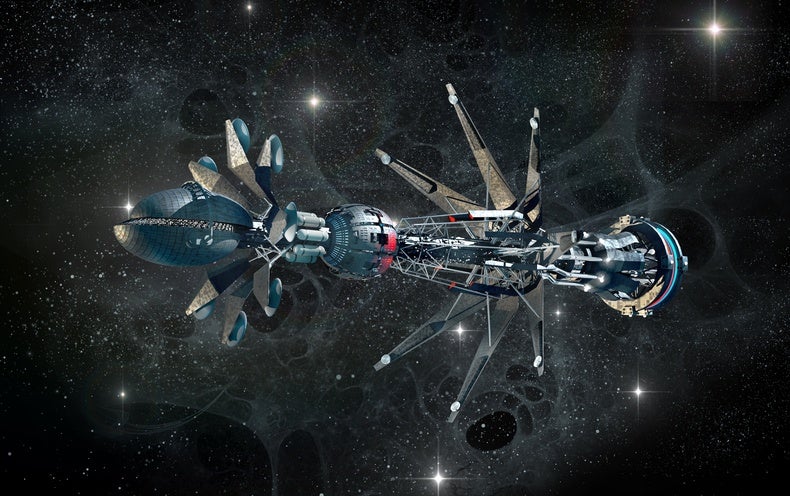
By now I have reached an age at which my birthdays can be thought of as a countdown to the inescapable end. We live our life without knowing when that end will come. But acknowledging its inevitability encourages us to build monuments of our accomplishments that will outlast us. Of course, our DNA can give us that sort of longevity through our children. But we often wish to add meaning to the world we leave behind that goes beyond our genetic code.
Genesis 3:19 states: “By the sweat of your brow you will eat your food until you return to the ground, since from it you were taken; for dust you are and to dust you will return.” The only person who escaped this fate is Clyde Tombaugh, the discoverer of Pluto, some of whose ashes are making their way out of the solar system aboard the New Horizons spacecraft. But these ashes are nothing but burnt-up DNA with no useful information content. It would have been far more scientific for NASA to send an electronic record of his genome, or even better, frozen stem cells.
But for the rest of us, our physical remains of the rest of us stays on Earth, where we are left with the fundamental question of what to leave behind so that we will be remembered. Cave dwellers left marks on the walls of their caves. Emperors, kings, wealthy individuals and university officials have left statues or portraits that preserve their physical appearance. Architects have created buildings. But the best monuments are not physical; rather, they are spiritual in nature. Musicians have left behind their compositions, scientists their original equations, painters their paintings and writers their stories. These brainchildren live in the space of abstract ideas, not in real space. An idea can last forever as long as there is a brain that knows about it.
Nevertheless, all terrestrial creations will disappear when the sun heats up in a billion years and boils off all of Earth’s oceans. Is there any hope for creating monuments that will outlast this terrestrial endpoint? The best approach might be to follow Tombaugh’s ashes into extraterrestrial space.
Our longest-lived monuments could be technological relics that exhibit active intelligence greater than the natural intelligence of humans; namely, they could be represented by equipment with artificial intelligence (AI). Imagine a compact CubeSat equipped with AI and 3-D printing that carries the torch of our goals into the vast extent of the Milky Way galaxy. Sending such systems to interstellar space, after training them through machine learning, would resemble the experience of sending our kids out into the world after educating them at home and in school. Each of us could train a unique AI system that reflects our own sense of meaning and purpose in life. Instead of painting the wall of a cave that will collapse in a billion years, we can shape the content of our personal AI system that will survive for billions of years in space, as if it were our own technological avatar.
These avatars could outlast the sun, continuing their journey indefinitely while replicating damaged parts or making extra copies of themselves with 3-D printers. If we could imagine this as the blueprint for the future of humanity, might it also represent the past of a civilization around another that predated ours by a billion years?
To find out, we should search with an underlining modesty for interstellar monuments of those who came before us in the cosmos. So far, all the telescopes we used to survey the sky have not been sensitive enough to detect the reflected sunlight from a CubeSat-size. The forthcoming Legacy Survey of Space and Time (LSST) with the Vera C. Rubin Observatory could find such monuments. Moreover, if any such objects enter the Earth’s atmosphere, they might be classified as unidentified aerial phenomena (UAP), of the type mentioned in the report delivered to the U.S. Congress on June 25, 2021.
The recently announced Galileo Project could potentially discover extraterrestrial monuments as they pass near Earth. Autonomous avatars could have been sent by other beings long ago, so that by now those beings have perished. The discovery of advanced technological artifacts will provide the same sense of awe as the discovery of prehistoric cave paintings dating back to 45,500 years ago. And finding an accompanying genetic record of the senders on board, with more information content than Tombaugh’s ashes, would be even more exciting.
This is an opinion and analysis article; the views expressed by the author or authors are not necessarily those of Scientific American.
from WordPress https://ift.tt/3E60Xiy
via IFTTT

No comments:
Post a Comment